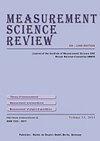Development of Modified Blum-Blum-Shub Pseudorandom Sequence Generator and its Use in Education
IF 0.8
4区 工程技术
Q4 INSTRUMENTS & INSTRUMENTATION
引用次数: 1
Abstract
Abstract In information security systems, the algorithm of the Blum-Blum-Shub (BBS) generator, which is based on the use of a one-way function and is a cryptographically secure pseudorandom number generator, became widespread. In this paper, the problem of the analysis of modified algorithms of the BBS generator operation is considered to improve their statistical characteristics, namely, the sequence repetition period. It has been established that in order to improve the characteristics of the classic BBS algorithm, it is necessary to systematize approaches to change the recurrent equation itself, the relationship between the current and the previous members of the sequence. For this purpose, a generalized unified model of the modification of the classical BBS algorithm is derived. The repetition period with computational complexity were analyzed for classical algorithm and 80 proposed modifications. A gain in statistical characteristics is improved with slight increase in the required computing power of the system. The proposed modified BBS pseudorandom sequence generator can be used in training of students when teaching cryptographic stability of information security systems. The study of this generator combines the knowledge of students acquired in both digital electronics and mathematics.改进的Blum-Blum-Shub伪随机序列发生器的研制及其在教育中的应用
摘要在信息安全系统中,基于单向函数的Blum-Blum-Shub(BBS)生成器算法是一种加密安全的伪随机数生成器,它得到了广泛的应用。在本文中,对BBS生成器操作的修改算法的分析问题被认为是为了改善它们的统计特性,即序列重复周期。已经确定,为了改进经典BBS算法的特性,有必要系统化方法来改变递归方程本身、序列的当前成员和先前成员之间的关系。为此,导出了一个广义统一模型对经典BBS算法的修正。分析了经典算法和80种改进算法的重复周期和计算复杂度。统计特性的增益随着系统所需计算能力的略微增加而得到改善。所提出的改进BBS伪随机序列生成器可用于信息安全系统密码稳定性教学中的学生训练。该生成器的研究结合了学生在数字电子和数学方面获得的知识。
本文章由计算机程序翻译,如有差异,请以英文原文为准。
求助全文
约1分钟内获得全文
求助全文
来源期刊

Measurement Science Review
INSTRUMENTS & INSTRUMENTATION-
CiteScore
2.00
自引率
11.10%
发文量
37
审稿时长
4.8 months
期刊介绍:
- theory of measurement - mathematical processing of measured data - measurement uncertainty minimisation - statistical methods in data evaluation and modelling - measurement as an interdisciplinary activity - measurement science in education - medical imaging methods, image processing - biosignal measurement, processing and analysis - model based biomeasurements - neural networks in biomeasurement - telemeasurement in biomedicine - measurement in nanomedicine - measurement of basic physical quantities - magnetic and electric fields measurements - measurement of geometrical and mechanical quantities - optical measuring methods - electromagnetic compatibility - measurement in material science
 求助内容:
求助内容: 应助结果提醒方式:
应助结果提醒方式:


